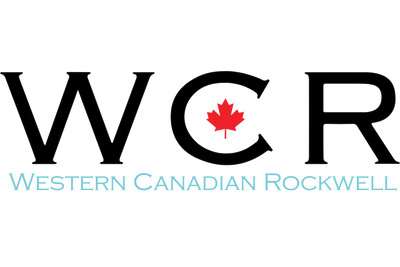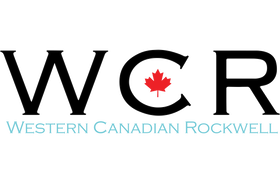2.5 TON FAQ's
WHY DO I WANT 2.5 TON AXLES?

Top Loading Double Reduction Differential
By having the center section (diff assembly) drop in from the top of the axle housing instead of the front or rear like conventional axles, this allows a few positive things to happen; 1) the drive line angles can be reduced as drive pinion is located at the very top of the differential, this also helps keep vulnerable drive line components out of the way of trail obstacles, and less likely to be submersed in mud or water. It also allows a pinion mounted brake system to be used without the risk of it being damaged. Also, with the differential being double reduction and top loading there isn't a large crown gear hanging down below the axles center line, with the proper shave kit, the ground clearance under a 2.5 Ton pan can be comparable to a dana 44.Fully Sealed Steering and Axle Components
The 2.5 Ton axles run a boot that seals to the axle tube and the outside of the steering knuckle. If properly maintained, these boots will completely seal out mud, water and dust from the kingpins and axle shaft u joints, it also prevents contamination from ever entering the wheel bearings through the backside of the spindle. Exceptional Aftermarket Support The 2.5 Ton axles have been used for years in off-road groups, from rock crawling to mud bogging. Because of their popularity, a lot of aftermarket companies have built parts from disc brake kits all the way to massive chromoly axle shaft kits. Things like truss kits armor and brackets are also very easy to purchase.Easy to Work on the 2.5 Ton Axles
Don't require much for specialty tools to be serviced, field jobs like changing axle shafts, bearings or seals can all be done with simple hand tools. Center chunks can be a bit more complicated to work on, but seldom require repair. The square plate steel axle housings are easy to weld to and build brackets and mounts for.How Big of Tires Can I Run With 2.5 Ton Rockwell’s?
There are many variables to take into consideration when dealing with this question, vehicle weight, horsepower, driving style, and terrain, are all things that can make a difference when taking into account the manner in which axle will hold up. A good rule of thumb is any full-size truck under 500 HP with an aggressive driver behind the wheel should hold up to 44" tires without too many issues. Keep in mind this is not a guarantee, nor does it mean that a 44" tire is the largest you can run on a stock 2.5 Ton axle. There are many people running 50" + tires on heavy rigs with decent hp that have very few issues, however a conservative driving style is taken into account.Can I Jump My Rig With 2.5 Ton Axles?
Do I Need to Run Boots on My Rockwell Axles? Even If I Am in Dry Conditions or If I Run Sealed U Joints?
Yes, the Rockwell axles are designed to use knuckle boots, they prevent dust, dirt, and water from entering critical wear points like the king pin bushings, thrust surfaces on the axle shafts, u–joints, also the Rockwell axles don't use a seal inside the spindle, without the boots it is possible for contamination to enter the hub through the inside of the spindle down the stub shaft. It is highly recommended to run one-piece silicone boots and keep them in good condition. It will help to significantly cut down on maintenance costs.2.5 Ton Differences and Similarity
Since day 1, the 2.5 Ton axles have all been very similar, they all used the same 6.72 ratio, the only real difference to be found, is in the front axle shafts. 3 versions were available from the factory; the Burfield Bendix style, also know as the ball and claw, uses 2 claw shaped yokes with 5 steel balls. The Rzeppa style, that resembles a cv style yoke. The u-joint style is the most desirable, as the pivot point (the u-joint) is replaceable, where’s the other 2 styles require a complete replacement of the yoke if it wears out. Many of the parts also interchange between the front and rear axle, both the center chunk and the wheel hubs are identical for the front and rear axle. This includes hub bearings, seals, spindle hardware, wheel studs and lug nuts.Flipping the Hubs
The hubs on a 2.5 Ton axle can also be flipped to change your track width. The hubs use the same bearing race on the inner and outer bearing, all that’s required on the rear, is to press the wheel studs out and flip them the opposite direction. During assembly, the hub bearings stay in the same spot on the spindle. The front does require a slight bit more work, after the studs have been pressed out and reinstalled you will also need to shave a slight bit off the back of the stud to clear the spindle bolt head. The factory spindle studs will also need to be removed and hex head bolts installed, keep in mind this modification will not work on the front axle if you are running the factory drum brakes.Changing the Configuration of a Front Steer Axle
The similarity in parts allows a front 2.5 Ton steer axle to be configured many different ways. From the factory, a 2.5 Ton has the steering tie rod behind the axle and the center chunk on the passenger side of the vehicle, however the axle can be flipped around, if you want the steering on the front of the axle. Simply remove the knuckles and swap the lb side to the rh, just keep in mind this will affect the Ackerman of the steering. If you want to swap the center chunk to the drivers side you can simply install the axle opposite of how it was designed to go in from the factory, this will end up with the steering out front and the chunk on the drivers side. If you want the steering behind the axle, simply swap the knuckles lb to rh. Another modification that can be done to the 2.5 Ton front axle, is the chunk can be flipped 180. This moves the pinion to the center of the axle improving drive line angles in some circumstances, you can watch a video showing how its done here.Can I Run Off Either Yoke on The Center Chunk? Will It Spin Backwards?
You are able to drive the differential off either yoke the axle will still drive in the correct direction, the reason for this is the pinion is still driving off the same side of the crown gear no mater what way you flip the chunk, to reverse the rotation of the axle you will need to remove the pinion and reinstall it in the housing with the pinion gear on the opposite side of the ring gear, although the differential will drive in the same direction no mater how you rotate the chunk keep in mind there are 2 different sides to the crown gear tooth, a drive side and a coast side, as it implies in the name one side is better to drive off of and the other is not, typically driving off the coast side of the gear isn't an issue if your hp numbers are low and tire size reasonable, to put it simply if you are running stock 16 spline axle shafts your chunk is well overbuilt and wont be the weak point in the axle, typically when driving off the ring gear starts to become a problem is when axle shafts are upgraded to a stronger material or a larger size, this moves the weak point typically into the center chunk2.5 Ton Lubrication
In most applications a 2.5 Ton axle will work well filled with a quality 80w-90 hypoid gear oil, in extreme applications where shock loading and abuse is common a heavy gear oil like Amsoil severe gear in a 190 weight has shown to work well, the thick oil has a better tendency to find its way into the upper cavity of the center chunk keeping the vulnerable pinion bearings/ ring and pinion well lubricated, One other thing to mention is if the pinion angle of the axle is adjusted more than 10 degrees from 0 there is a possibility of pinion bearing oil starvation, the upper cavity of the 2.5 Ton axle relies on oil spray from the pinion gear, if the gear is in the uphill position and the axle is on too much of an angle oil will pool away from the pinion gear causing it to starve2.5 ton lockers
All 2.5ton axles come factory with open differentials, the aftermarket has provided a few options though, ARB has a selectable air locker option, and a few companies such as Yukon offer an automatic Detroit style locker, there is also the option to do a full spool and permanently lock both axles together
2.5 Ton Weights and Dimensions
- 2.5 Ton Rockwell front 100% complete 842 lbs
- 2.5 Ton Rockwell front no brakes 682 lbs
- 2.5 Ton Rockwell front no brakes narrowed 668 lbs
- 2.5 Ton Rockwell rear 100% complete 692 lbs
- 2.5 Ton Rockwell rear no brakes 532 lbs
WMS
2.5 Ton Rockwell’s can have the hubs flipped out for a 79” WMS, or flipped in for a 69” WMS (69” WMS is very similar to 1 ton axles)
WCR can also shorten the long side axle tube, this will center the chunk and narrow the WMS to 72” (hubs out) and 62” (hubs in).
Wheel bolt pattern: 6x8.75
Axle Shaft Diameter: 1-5/8” with a coarse 16 spline
WCR can also shorten the long side axle tube, this will center the chunk and narrow the WMS to 72” (hubs out) and 62” (hubs in).
Wheel bolt pattern: 6x8.75
Axle Shaft Diameter: 1-5/8” with a coarse 16 spline
U-joint Axle Shaft Lengths (approx.):
To center of U-joint Stub: 12-7/16"
Short Side 25-1/2"
Long Side 33-1/4"
Short Side 25-1/2"
Long Side 33-1/4"
Steering stroke on the factory tie rod, lock to lock 8.5" Chunk height above axle tube 9.5"
Check out our products available at the links below!
- 2.5 Ton Aftermarket Parts
- 2.5 Ton Axles and Axle Assemblies
- 2.5 Ton Bearings, Boots and Seals
- 2.5 Ton Replacement Parts
If you have any questions about your Rockwell, Axletech or Meritor axle we encourage you to check out our list of technical videos, we've spent hours compiling these to help assist you in working on your axles. We provide all this technical info to you absolutely free of charge! You can find a full library of our video's and media located here: WCR Videos. If you've searched all our media and still can't find the answer you're looking for, we offer a full range of complete technical service manuals in either Digital or Hard Copy.
If that still won't answer your questions you can email our head tech at Neil@wcr-inc.ca and he will get back to you in 24-48hr.




